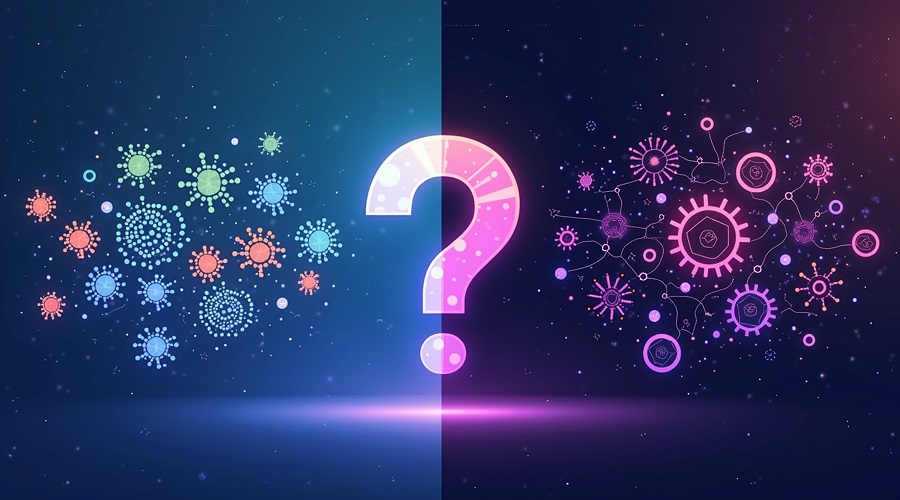In a world where deep learning reigns supreme, it’s easy to forget that traditional methods, such as clustering techniques, might even still hold relevance. With all the buzz of neural networks, image generation, and transformers, does anyone still even use k means or hierarchical clustering?
The answer is a straightforward yes. Clustering remains not only relevant in the modern age, but in many cases, it works alongside deep learning instead of being completely replaced by it.
Let’s look at the reasons why.
What is Clustering Techniques?
Clustering is a type of unsupervised learning where the algorithm groups similar data points together. The goal is to find structure in data without having predefined labels.
Some of the most common clustering techniques include:
- K means clustering
- Hierarchical clustering
- DBSCAN (Density Based Spatial Clustering of Applications with Noise)
- Gaussian Mixture Models
These techniques are especially useful when we do not know much about the data or when we are dealing with raw unlabelled data.
Reasons Why Deep Learning Became Popular
The field of artificial intelligence has been completely transformed by deep learning. We have seen its exceptional capabilities in tasks such as language translation, self- driving cars, voice assistants, and even medical imaging.
The core strength of deep leaning lies in processing enormous datasets in the following domains:
- Image classification
- Natural language processing
- Speech recognition
As the name suggests, deep learning works with a labeled dataset in a supervised manner. Thus requiring, immense resources like a powerful computer. In comparison, clustering tasks only require moderate computing power, do not need to be supervised, and are much more aptly exploratory.
Deep learning clearly has extreme power, so why is it not being used in all fields?
When Clustering Shines?
Clustering is important now and in the future in the following practical situations:
1. Data Analysis and Cleaning
It is important to note that there are data patterns that need to be identified prior to building any model. The following list showcases what clustering is helpful for:
- Finding anomalies
- Discovering natural groupings
- Reducing noise in the data
For instance, a retail business might use clustering to segment customers based on purchasing behavior before building a predictive model.
2. When There is a Shortage of Labeled Data
Deep learning is effective when large volumes of labeled data are available, however, generating labeled data can be costly and time consuming. It is often easier to deal with data if:
- There is a significant amount of unlabelled data available.
- There is a need to pattern discover or categorize the data.
One good example is a museum that has thousands of old manuscript images and uses clustering to group the documents visually without knowing the contents.
3. In Recommendation Systems
Different movie platforms, e-commerce websites, and music applications rely on clustering to either create user segments or group items such as products, music or movies together. These clusters serve as the foundational building blocks for targeted recommendations. These are later refined using deep learning model techniques.
4. Enhancing Deep Learning
Clustering is used within the workflows of Deep learning as well. For instance:
- Deep clustering employs autoencoders and uses clustering to handle complex data.
- Feature clustering aids in decreasing the number of features.
- Clustering assists in pretraining neural networks to set initial weights when little labeled data is available.
To put it plainly, clustering does not compete with deep learning; it enhances it.
Real World Example: Cancer Research
Pattern identification in the biomedical field makes use of clustering techniques associated with gene expression data. For example, researchers might use k-means clustering to create clusters of similar genetic profiles. These clusters can represent distinct subtypes of cancer. After determining these groups, deep learning models can be developed to classify data from new patients based on the identified clusters.
This type of collaboration is typical in areas such as social science, finance and health care.
Advantages of Clustering in Today’s AI World
Advantages of Clustering in Today’s AI World

- Labeled data is not necessary: It performs reasonably well in the absence of labeled data.
- Understanding: It’s more straightforward to communicate to non-technical colleagues than the deep learning models.
- Economic efficiency: Does not require costly GPUs, extensive training periods, or other considerable resources.
- Helps improve other tasks: Helps improve and aids other tasks, including classification, anomaly detection, and personalization.
The Rise of Hybrid Approaches
There is no longer a need to pick clustering over deep learning or vice versa. The future lies in merging them to form sophisticated, flexible hybrid systems. Examples of some modern approaches are:
- Deep Embedded Clustering (DEC): Merges the principles of clustering with deep autoencoders to improve representation power.
- Self-supervised Learning: Relies on clustering to manufacture pseudo-labels from unlabeled data.
- Contrastive Learning: Learns to segregate and group similar items together, a representation borrowed from clustering.
These are some of the ways in which these two techniques are co-evolving.
So, Is Clustering Still Relevant?
Definitely not. Clustering is an approach that falls within the data science field. It is straightforward and efficient for a myriad of problems. While the possibilities of deep learning are virtually limitless, clustering still remains essential, particularly at the initial phases of understanding data and in low-data situations.
Rather than placing clustering in the category of outmoded devices, it is best to view it as a valuable companion that wisdom can take advantage of to help shine the light onto deep learning.
Final Thoughts
As the industry rushes to find the latest models and the largest datasets, we sometimes overlook the overwhelming power simplicity brings. While clustering might not have the ability to produce realistic faces or instant book translations, it provides something equally important: understanding.
So, the next time you have raw data, resist the urge to immediately build a neural network. Instead, step back and cluster the data to uncover the narrative hidden within. No algorithm could figure out the insights that are likely hidden within the data.
If you’re a PhD researcher aiming for in depth understanding on clustering techniques or facing difficulty in topic selection, connect with us now. We provide expert Research Assistant support along with Proofreading and Editing services.
FAQs
Q1. Can deep learning be used for clustering?
Yes, deep learning can be used for clustering by learning meaningful feature representations, often through autoencoders or deep embedded clustering methods.
Q2. What are some real-life applications of clustering algorithms?
Clustering is used in customer segmentation, image compression, anomaly detection, document classification, and genetics.
Q3. Can CNN be used for clustering?
Yes, CNNs can extract features from data (like images), which can then be clustered using algorithms like K-means or DBSCAN.
Q4. What is the difference between clustering and classification?
Clustering is an unsupervised learning technique that groups similar data without labels, while classification is supervised and assigns predefined labels to input data.
Q5. Which algorithms are commonly used for clustering?
Common clustering algorithms include K Means, DBSCAN, Hierarchical Clustering, and Gaussian Mixture Models.





Comments